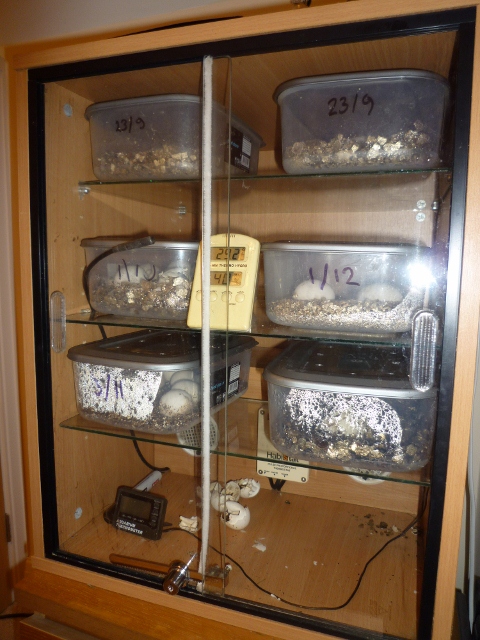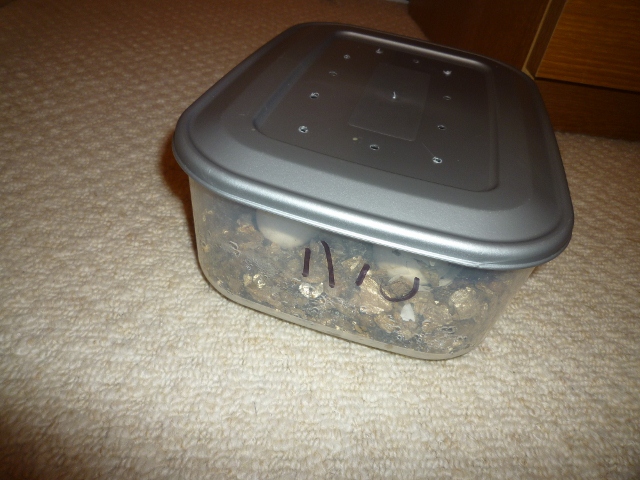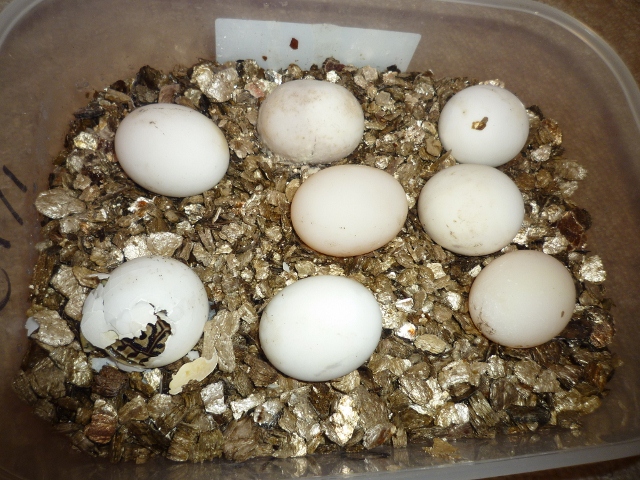- Joined
- Sep 21, 2010
- Messages
- 28
I am realtively new to breeding tortoises. I have been keeping them for over 15 years, but it has only been the last 18 months that I have had success in breeding them.
The following is my setup

This is my incubator - I know the temp is reading low, but I have just opened the door to check and air the eggs.
I use vermiculite and place each clutch laid in a plastic box with holes drilled in the top. I make the vermiculite so that it holds water, but isn't dripping wet.

However, I seem to be getting only about 60% hatch rate. As you can see from this photo, two eggs appear infertile (orange ish) and one is starting to go mouldy.


Which is a real shame, as they all appear to 'chalk' after laying.
What am I doing wrong? I simply make a depression in the vermiculite and place the egg in it. Should I be burrying them further?
Temps are kept at 31/32 degrees.
Any advice would be very much appreciated for next season eggs.
Thanks for looking.
The following is my setup

This is my incubator - I know the temp is reading low, but I have just opened the door to check and air the eggs.
I use vermiculite and place each clutch laid in a plastic box with holes drilled in the top. I make the vermiculite so that it holds water, but isn't dripping wet.

However, I seem to be getting only about 60% hatch rate. As you can see from this photo, two eggs appear infertile (orange ish) and one is starting to go mouldy.


Which is a real shame, as they all appear to 'chalk' after laying.
What am I doing wrong? I simply make a depression in the vermiculite and place the egg in it. Should I be burrying them further?
Temps are kept at 31/32 degrees.
Any advice would be very much appreciated for next season eggs.
Thanks for looking.